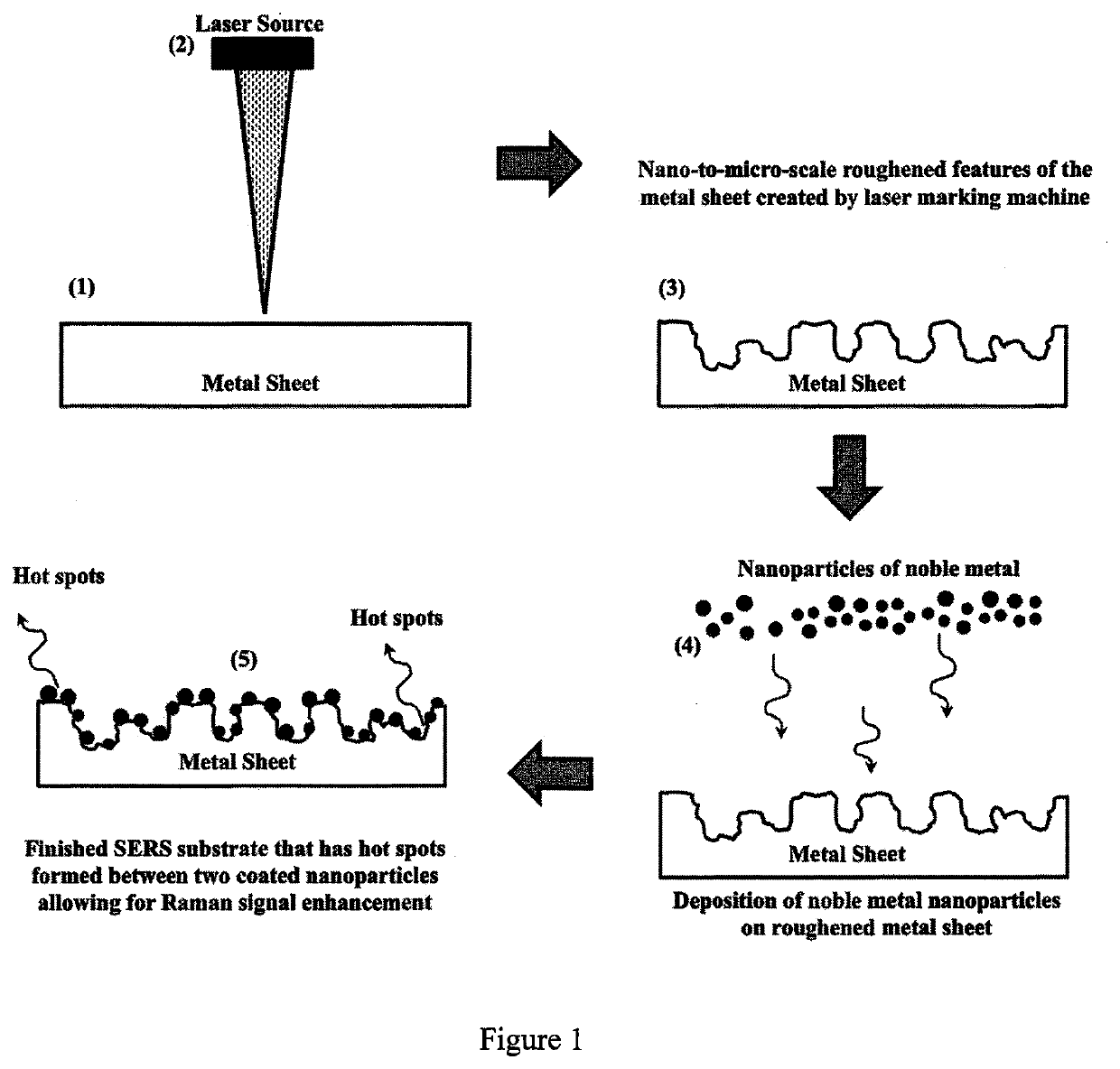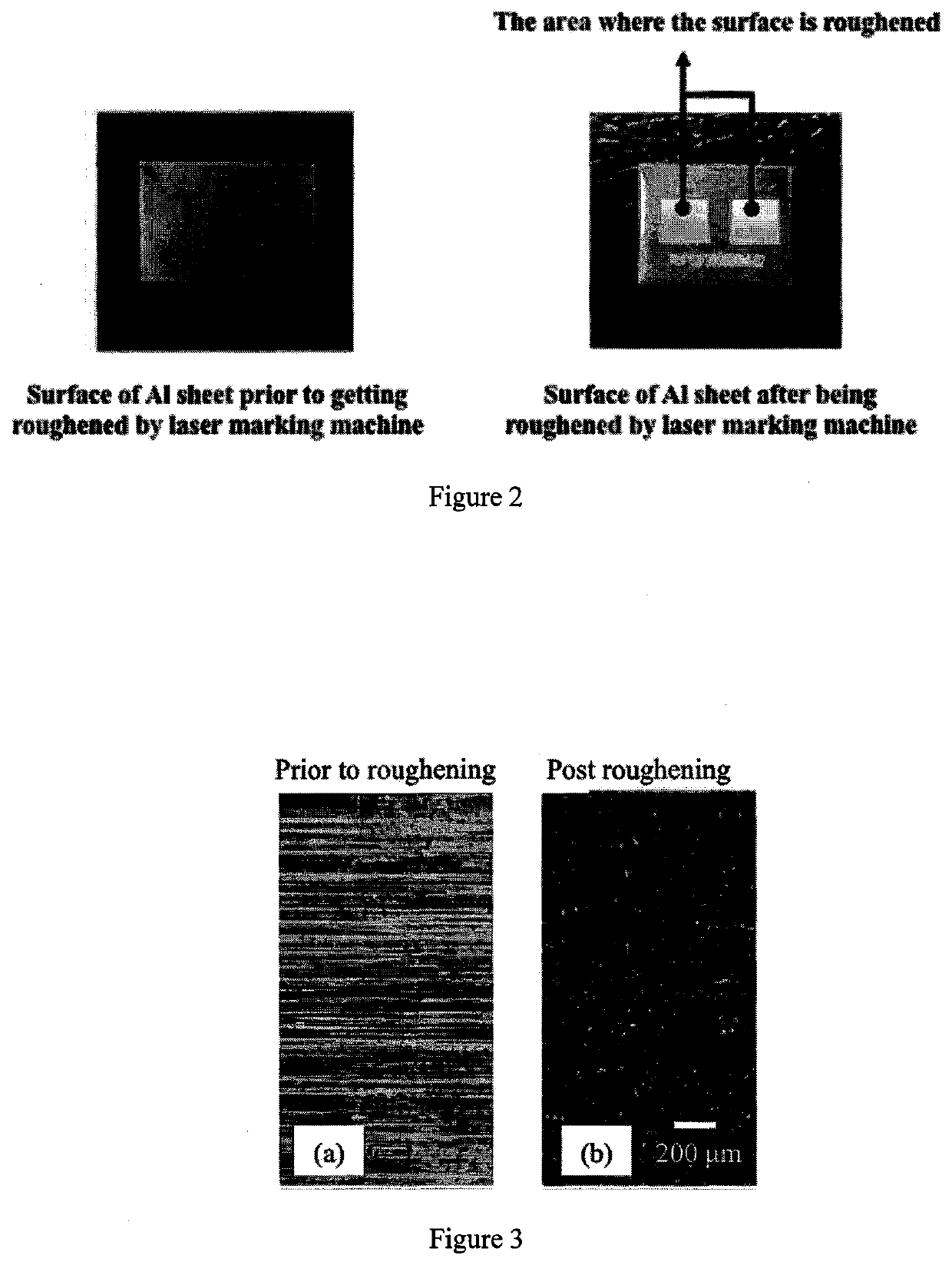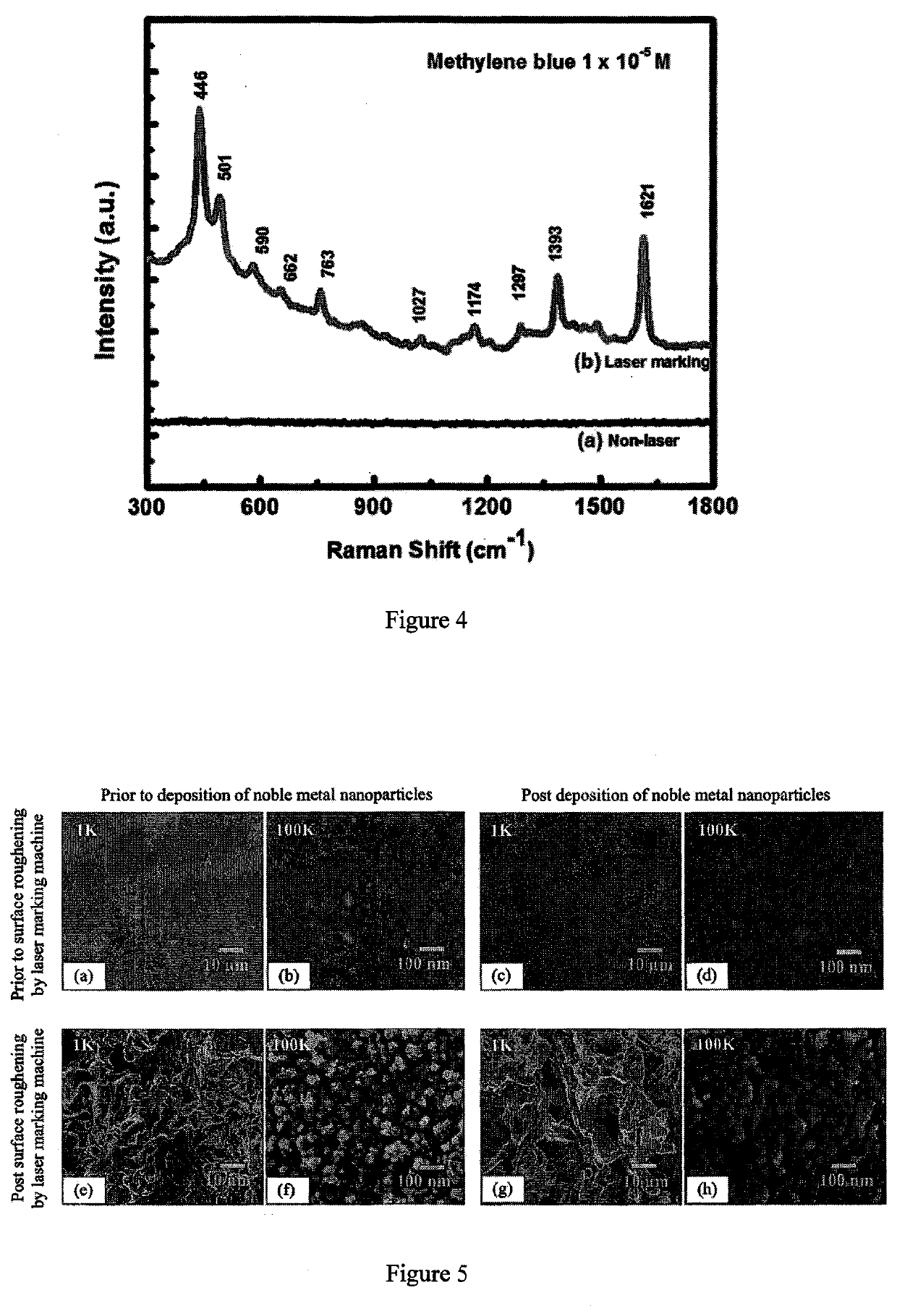Fabrication process of 3d-structured surface-enhanced raman spectroscopy (SERS) substrates by using a laser marking machine to create roughness on metal sheets
a technology of raman spectroscopy and substrates, which is applied in the field of laser marking machines for creating roughness on metal sheets, can solve the problems of high cost, high cost, and high cost of electron beam lithography fabrication processes, and achieves simple and straightforward, enhances raman signals, and is not expensive
- Summary
- Abstract
- Description
- Claims
- Application Information
AI Technical Summary
Benefits of technology
Problems solved by technology
Method used
Image
Examples
example i
[0022]The process flow for making rough surface on a metal sheet by laser engraving technique is depicted in FIG. 1. The numeric labels marked in FIG. 1 stand for: (1) Metal sheets, (2) Laser marking machine, (3) Roughened metal surface, (4) Silver nano-particles coated on roughened metal surface, and (5) Distance between silver nano-particles that are coated on roughened metal surface.
[0023]In an exemplary embodiment, aluminium (Al) sheets that are 0.4 mm thick are selected as the metal sheets to be roughened. This is because they are vastly available in the market and the price is reasonable. A 3-step sonication in acetone, isopropanol and deionized (DI) water for 10 minutes each is employed to clean the Al sheets. This is followed by Al sheets drying by a nitrogen gun.
[0024]In a particular exemplary embodiment, a programmable laser marking machine is used to create uniform and nano-scaled roughness on the cleaned Al sheets. The programmable laser marking machine can engrave arbit...
example ii
[0026]In an exemplary embodiment, a complete 3D-structured SERS substrate is achieved when the surface of an Al sheet that has uniform and nano-scaled roughness is coated by silver nanoparticles whose clusters are apart in nanometer range. The performance of the complete 3D-structured SERS substrates is determined by the detection of methylene blue (MB) at the concentration of 1×10 M. The MB solution is dropped onto the SERS substrates, then placed into the Raman Spectrometer where the laser wavelength is set to 785 nm, the laser power can be adjusted from 0-400 mW, and the measurement time is 10 seconds. In FIG. 4, the result shows the peak signals at 446, 501, 590, 662, 763, 877, 1027, 1174, 1297, 1393 and 1621 cm−1. These peak signals are results of the following bonds δ(C—N—C), δ(C—N—C), N / A, γ(C—CH), N / A, N / A, β(C—H), ν(C—N), N / A, α(C—H) ring and ν(C—C)ring, respectively. (Naujok, R. R., Duevel, R. V., Corn, R. M. Langmuir 1993, 9, 1771; Félidj, N., Aubard, J., Lévi, G., Krenn,...
example iii
[0027]In a further exemplary embodiment, the varying time of silver deposition on the roughened Al sheets results in changing performance of the 3D-structured SERS substrates. FIG. 6 depicts MB detection at 1×10−5 M of 3D-structured SERS substrates with varying time of silver deposition. The result reveals that the time of deposition affects the size of silver nanoparticles and subsequently the performance of the SERS substrates. In FIG. 6, the deposition times from 10-60 seconds yield the substrates that can detect peak signal of MB at 446, 501, 763, 1393 and 1621 cm−1. The deposition time of 30 seconds gives the highest signal enhancement. The deposition time of 70 seconds results in low signal enhancement with peaks only at 446 and 1621 cm−1. FIG. 7 and FIG.8 show that the size of silver nanoparticles increase with the deposition time. When the deposition reaches 70 seconds, the nanoparticles are very large that the distance between nanoparticles can no longer be measured. As the...
PUM
| Property | Measurement | Unit |
|---|---|---|
| Length | aaaaa | aaaaa |
| Length | aaaaa | aaaaa |
| Fraction | aaaaa | aaaaa |
Abstract
Description
Claims
Application Information
 Login to View More
Login to View More - R&D
- Intellectual Property
- Life Sciences
- Materials
- Tech Scout
- Unparalleled Data Quality
- Higher Quality Content
- 60% Fewer Hallucinations
Browse by: Latest US Patents, China's latest patents, Technical Efficacy Thesaurus, Application Domain, Technology Topic, Popular Technical Reports.
© 2025 PatSnap. All rights reserved.Legal|Privacy policy|Modern Slavery Act Transparency Statement|Sitemap|About US| Contact US: help@patsnap.com



